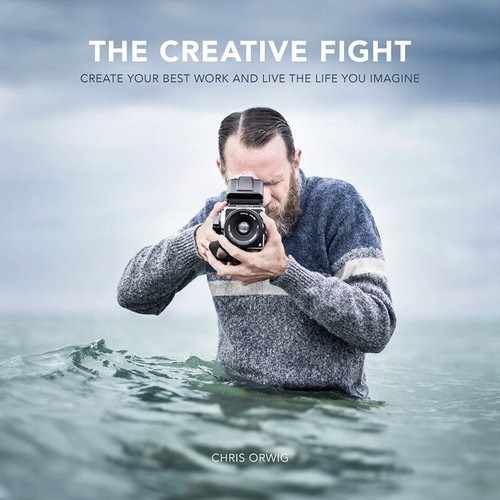Chapter Thirty-Eight. Iterate and Innovate

John knew what it was like to be poor. He was writer after all, and in the early 1900s, it was tough to get a job. John tried his luck in New York, but miserably failed. As he said, “I had a thin, lonely, hungry time of it. And I remember too well the cockroaches under my washbasin and the impossibility of getting a job. I was scared thoroughly. And I can’t forget the scare.” So John moved back to the comforts of California, where he was born. He picked up odd jobs, like working at a fish hatchery in Tahoe City, where he met his future wife. They got married and moved to Pacific Grove to live in a cottage owned by his dad. Still scraping by, John wrote even though funds were sparse. But they were in love, and that kept them afloat. As he wrote to a friend, “Financially we are a mess, but ‘spiritually’ we ride the clouds.”
Mind the Gap
John was hungry for success. He wrote with a singular drive he called “monomania” for a few years. After completing his first novel, John and his wife waited patiently for the first reviews. It was a critical and commercial flop. Yet it wasn’t as if he were a hack who didn’t have strong writing skills. John went to Stanford and was sharp as a nail. But there was a gap—a gap between what he knew he could write and the writing he had done.
The gap is something that everyone who does creative work knows. The celebrated storyteller Ira Glass put it this way: “All of us who do creative work, we get into it because we have good taste. But there is this gap. For the first couple of years you make stuff, it’s just not that good. It’s trying to be good, it has potential, but it’s not. But your taste, the thing that got you into the game, is still killer. And your taste is why your work disappoints you. A lot of people never get past this phase; they quit.”
John wasn’t willing to give up, so he fought with words for four more years—good work takes time. He finished another novel but felt depleted and alone. He wrote, “I need a dog pretty badly.” Yet more than companionship, he needed some cash. The light company was scheduled to turn the power off in a few days. Fortunately, the novel was a very minor success. The electricity stayed on, and the gap diminished some more. He continued to write, and the following few novels closed the gap even more. When he published his book Tortilla Flat, the gap disappeared.
Tortilla Flat was a critical and commercial success. Now in his mid-thirties, John Steinbeck was getting his stride, and he continued to write at a quickening pace. Plus, Steinbeck finally had enough money to pay rent and fulfill a few dreams. One dream was getting a dog. So they adopted Toby, a small Irish setter pup. The puppy played around while Steinbeck sharpened his pencils and got to work.
Man’s Best Friend
Steinbeck loved pencils, even though using them took more time. He began each day with twelve sharpened pencils sitting on his desk. This was his ritual to summon the muse. But once he picked up a pencil it was hard labor scratching out all those words. And using a pencil for so many hours built up calluses on his hand.
Steinbeck set out to write a new book about the place he grew up and the people who lived there—people who had callused hands from all their hard work. The book was turning out well. The plot was strong and filled with the intrinsic yet underestimated goodness and beauty of simple things. The sands of time seemed to be on his side.
One day after all twelve pencils were dull, he left his study and walked out the door. Seeing an opportunity to explore, Toby, the ever-inquisitive puppy, decided to take a look around. Finding a stack of papers, she quickly tore them to shreds. Months and months of work on the book was turned into trash. Steinbeck wrote to his publisher, “Minor tragedy stalked. There was no other draft. I was pretty mad, but the poor little fellow may have been acting critically.” It was a painful blow, but Steinbeck didn’t take offense. He even wondered if Toby knew what he was doing after all—maybe Toby was right and what had been written needed to be revised?
Steinbeck rewrote the book, and it turned out better the second time around. His experience of losing the book might just be what gave it its edge. And it was almost as if Steinbeck’s own fight was hidden within his words. You can see it with quotes like these: “I know it’s tough, but don’t give up... I said I’d fight back, but I didn’t say I’d fight fair.... And now we sing for everything that we’ve lost. And now we scream for everything that we’ve loved... Truth be told I would set my whole world on fire just to watch it burn in your eyes.” But perhaps the most famous phrase gives it all away: “The best laid schemes of mice and men often go awry.” Needless to say the book, Of Mice and Men, was a huge success.
Like most people who do creative work, Steinbeck wasn’t an overnight success. Rather it was the endless hours, immense effort, and emotion that eventually led Steinbeck to create great work. All of the time spent on those early unsuccessful books developed his skills and technique. Most of us want the skill (and the fame) but don’t know where to start. And most of us don’t start because we set our sights too high. We aim for the stars but can’t even get off the ground.
Herein lies the problem with dreams that are big: they improve our vision but don’t change our technique. Technique takes time, whether you’re a writer working on rough drafts, a photographer shooting frames, or a musician practicing scales. The whole point is to start and persist; otherwise, procrastination sets in. As J. R. R. Tolkien said, “It’s the job never started that takes the longest to finish.” And whether you’re a writer, photographer, poet, or martial artist, the journey to gain skill follows a similar path.
Enter the Dragon
Bruce’s journey to greatness began when he was a kid. As a young boy he learned martial arts as a way to defend himself from other kids. Then in his teens he learned how to dance, becoming a cha-cha champion with all of his slick moves. After high school, he moved to Seattle to attend the University of Washington and pursue the higher mind. There he studied subjects like drama, psychology, and philosophy. Amidst the hard work of academic life, he discovered a love for poetry. And he wrote poems like this one, about Lake Washington: “The breeze on the bank. Already blows cool and mild. The distant merging of lake and sky.”
Simultaneously, Bruce practiced martial arts, spending hours and hours refining his skills. And he trained with such discipline that he could do push-ups with only two fingers touching the ground. He was quick on his feet, strong in body, and growing in his mind. He would soon combine all these skills to create a version of martial arts that was completely his own. And Bruce Lee’s fighting style wasn’t just poetry in motion; it was art.
John Steinbeck and Bruce Lee are among some of the most creative people of their time. And if you look deeper into their stories, you’ll discover that they both brought innovation to their trades. The innovation came from years of refining their craft. Their secret was to iterate and persist.

The Purpose of Practice
To iterate is to do something repeatedly. Those who embrace iteration approach craft like an archer who brings a quiver full of arrows—knowing that you can’t hit the bull’s-eye without repetition and skill, and knowing that a single bull’s-eye is just good luck. But it’s vision, patience, and persistence that provide the ability to hit it again and again.
It goes without saying that technique doesn’t develop by itself. And without technique, creativity dies. That’s why most kids stop drawing around the age of 12. It’s the age when most art education ends. Without the training, repetition, and practice, they give up. Who wants to keep drawing bad pictures of the same old things? But when we learn new techniques, it feeds the creative fire. Technique is the lifeblood of all creativity that becomes art. But the point of developing technique is never simply the mastery of a technical skill. The point of learning technique is to transcend.
The popular image of Bruce Lee is an aggressive fighting machine. This image works because he was an indomitable force. Lee created his life with his own bare hands. As he said, “To hell with circumstances; I create opportunities.” Lee was a force of nature and his ego was strong, but he was humble as well. As C. S. Lewis explained, “True humility is not thinking less of yourself, but thinking of yourself less.” Bruce Lee thought highly of himself, but when was in the zone, all those thoughts disappeared. His technical skill transcended rational thought. It was as if his movement were a subconscious flow. And when he fought it was as if he walked on air.
Thinking can impede the creative flow. That explains why athletes, artists, dancers, and musicians put so much time into practicing their skill. As the French artist Edgar Degas said, “Only when he no longer knows what he is doing does the painter do good things.” Yet to achieve such a state requires an immense amount of work. And it isn’t just about mastery or skill. At the photography school where I taught, many of the graduating students were technical virtuosos but were expressively weak. These students had mistakenly confused technique as the end goal, gaining skills without emotional depth, heart, and soul. People like John Steinbeck and Bruce Lee combined technique with much more. The result was not a bag of tricks but a wild and prolific creative flow. The most creative pursue expertise with a higher and more noble goal.
Exercise
STEP 1
Set aside the time to develop your skill. Don’t worry about writing a great novel or perfecting a martial arts move. That will come with time. Stop procrastinating because your dreams are so big. Begin where you are with what you have, and schedule the time to refine your craft. Select one skill that you want to learn, and schedule a fixed amount of time to practice and repeat your practice multiple times for the next month.
STEP 2
Technique combined with vision, heart, and soul leads to great things. Spend a few minutes in silence considering how you can add depth to the technique that you desire to learn.


